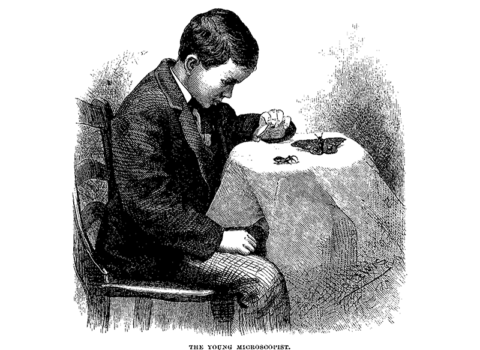A Cloistered France
France is currently undergoing a widespread political and cultural crisis. The storm over pension reform, the death of seventeen-year-old Nahel Merzouk, shot dead last June in Nanterre by a police officer, the street protests and riots that followed his death, the rhetorical violence issuing from the ranks of the National Assembly—all point to a reversal of the “republican values” politicians on all sides boast of. France’s philosophical principles—embodied by the essential concept of fraternity—are giving way to an ugliness of spirit that is manifested in metaphorical mutilation of the body politic and social contract.
Strangely enough, the outside world is reacting to events in France as if everything were fine. Foreign tourists continue to flood iconic spots, and in such large numbers that the government has launched a program to regulate “over-tourism.” Nowhere is this over-tourism more evident than at the foot of the Eiffel Tower; nowhere is the decline of the French republican ideal more striking.
But isn’t the decay of the Republic mostly illustrated by the inequalities in suburban districts, like that of “Nahel M.,” or the isolation of poor Arab and African immigrants, or the economic hardships of the people who live in forgotten towns and villages that started the gilets jaunes movement? In part, yes. This France, unknown to tourists as well as to French president Emmanuel Macron, is a tumor fed by the indifference of the elite.
France the beautiful, the France of the Enlightenment, however, is at her best when she is confident, exuding faith—in liberty, equality, and fraternity—without fear. The Eiffel Tower is the perfect symbol of this popular confidence—brilliant engineering erected for the 1889 Exposition Universelle and open to the world–a beacon dedicated, in part, to the freedom to imagine and reflect. Today, this magnificent structure is blocked off by a bulletproof wall designed, ostensibly, to protect visitors from “terrorism.”
Since the completion of this security project, access to the simple, direct path through the Champs de Mars park to the tower—in my opinion also the best viewing point—is prohibited. Just to enter the esplanade under the tower, you must submit to a security check (even though entry is free). What’s worse, perhaps, is that this enclosure has ruined the lovely walk that made the park so charming.
At the height of the COVID pandemic, the preservation society SOS Paris explained the collateral damage caused by this decision:
As Parisians were so cruelly being deprived of green spaces . . . important landscaping work was taking place along the paths surrounding the Eiffel Tower. Millions of visitors must now line up to access the security gates, like at an airport. These gates were integrated into a large glass and metal wall that for two years now has imprisoned and defaced the Eiffel Tower and its two charming English gardens, which are now reduced to waiting areas. These spaces were not designed to withstand such a high level of foot traffic, so they had to be paved.
As a part-time neighbor of the Eiffel Tower, I can attest to the aesthetically devastating effect of securing this remarkable structure. Walking around the tower forces you to wade through hordes of tourists and street vendors, all squeezed together in a small space so as to obey the authorities. Already, the image of a suffocated, cloistered, and fearful France depresses me. But is this violation of public spaces even an effective security measure? Paris city hall and the metropolitan police commissioned this hyper-security after the November 2015 terrorist attacks, including the mass shooting at the Bataclan theater. According to Le Parisien, the purpose was to “reinforce” the site against any mass attacks and killings.
In the first place, I rather agree with the late senator Eugene McCarthy, who thought that surrounding the White House with a fence to prevent access to assassins would just encourage the most ambitious of lunatics. In 1968, a year of extraordinary violence in America, McCarthy declared that if he were elected president, he’d take down the fence. He insisted that without a challenge to their ingenuity, would-be killers would lose interest. Tinged with irony as the idea was, McCarthy was nonetheless making a serious point.
As the late journalist Russell Baker remarked in 1995, McCarthy had understood that too much security could turn out to be self-defeating, and that the dream of absolute security, after all, was nothing more than a dream. What Osama bin Laden illustrated on September 11, 2001 (and the attack on the magazine office of Charlie Hebdo fourteen years later), was that unpredictable and bold actions always have an advantage over technology, however advanced, and the same is true for surveillance, however aggressive.
The new security perimeter at the Eiffel Tower, designed by architect Dietmar Feichtinger, is intended to be transparent—literally. But it is also a delusion. All you have to do to mistrust overconfident security experts is consider the assassination attempt on the mayor of the town of L’Haÿ-les-Roses during the recent protests. On that occasion, “terrorists” launched a burning car, smashing it through the gate of the mayor’s home. Perpetrators then set fire to the family car with the almost successful intention of setting the house on fire and killing those inside.
I am absolutely in favor of civic prudence. On the other hand, I second Russell Baker when he wrote, “Each increase in what we call security involves the risk that another piece of freedom must be sacrificed to pay for it.” As well as a piece of the national soul, one might add.



